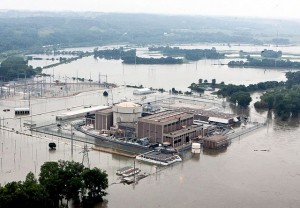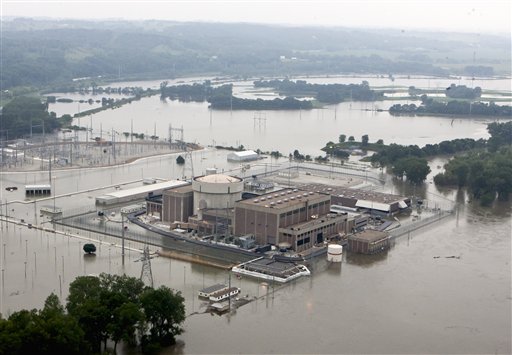![]() Tweet The flooded Fort Calhoun nuclear power plant is not exactly like the nuclear plants at Fukushima Daichi and Fukushima Diana. There are three main differences: First of all, there’s one plant, not 12. The difference of scale is tremendous. Secondly, it was offline – shut down for refueling – when flooded. Meaning, we got lucky, really lucky. Finally, it was hit by the gradually increasing pressures of rising floodwaters, not by an earthquake, a tsunami, and aftershocks. This is huge!
Tweet The flooded Fort Calhoun nuclear power plant is not exactly like the nuclear plants at Fukushima Daichi and Fukushima Diana. There are three main differences: First of all, there’s one plant, not 12. The difference of scale is tremendous. Secondly, it was offline – shut down for refueling – when flooded. Meaning, we got lucky, really lucky. Finally, it was hit by the gradually increasing pressures of rising floodwaters, not by an earthquake, a tsunami, and aftershocks. This is huge!
Steve Everly, at the Kansas City Star, reported that David Lochbaum of the Union of Concerned Scientists was “Reassured.” (here). I spoke to Mr. Lochbaum about the flooded plant on June, 29, 2011.
Most of the releases of radioactive material, generally tritium and tritiated water, occur when plants are online. Because the plant was offline, very little radioactive material has been released into the biosphere as a result of the flooding. While it is easy to filter heavy metals, it is very expensive to isolate tritiated water from water.
The damages due to the flooding are likely to be in the ballpark of $1,000,000 per day in lost revenue – $23 Million since June 6 – because the plant produces power worth about $1,000,000 per day. The buildings that have been damaged are collateral buildings, not the reactor itself. Those buildings would be less expensive to repair than the reactor.
At 35 years old, the plant is near the end of its design life. While we can engineer plants that are as safe as the NRC requires, new wind, solar, geothermal, hydro, and efficiency cost less than new nuclear or coal with carbon sequestration. Safety, security, and waste management are not the challenges with sustainable technologies that they present with nuclear and coal. Therefore, it seems logical to consider that once it is decommissioned, the plant will be replaced with wind, solar, geothermal, hydro, and efficiency.

